Jersey Cattle
- January 30, 2024
- 0 comment
Jersey Cattle, often affectionately referred to as Jerseys, are a remarkable breed known for their distinctive qualities and invaluable contributions to the world of dairy farming. Originating from the picturesque Isle of Jersey in the English Channel, these cows have a rich history dating back to the 18th century. What sets them apart is their elegant yet relatively small stature, typically weighing between 900 to 1,200 pounds. Their striking fawn coloration and endearing facial features, often adorned with white patches or blazes, make them instantly recognizable.

Beyond their aesthetics, Jerseys are revered for their exceptional milk production, producing milk with a higher butterfat content, making it ideal for premium dairy products. Their gentle disposition and adaptability make them a favorite among farmers and dairy enthusiasts, while their efficiency in converting feed into milk contributes to cost-effective and sustainable farming practices. Jersey Cattle continue to hold a special place in the world of agriculture, embodying both charm and utility.
| Specification | Details |
|---|---|
| Origin | Isle of Jersey in the English Channel |
| Size | 900 to 1,200 pounds |
| Height at Shoulder | 4.5 to 5 feet |
| Coloration | Fawn, sometimes white |
| Facial Features | Unique markings, white patches/blazes |
| Temperament | Gentle and docile |
| Milk Butterfat Content | 4.5% to 5.5% |
| Efficiency in Milk Production | High efficiency |
| Ease of Handling | Easy to manage and handle |
| Adaptability | Thrives in various climates |
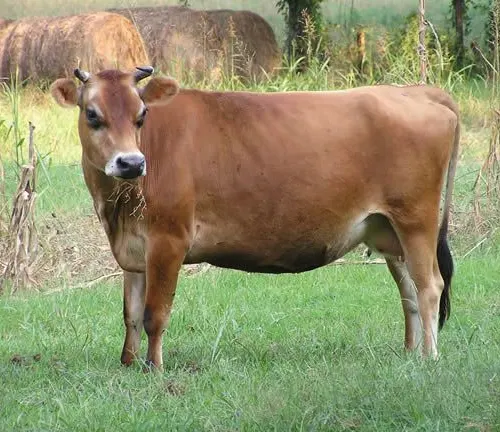
Jersey cattle, often simply referred to as Jerseys, are a remarkable breed that has made a significant impact in the world of dairy farming. In this article, we will take an in-depth look at Jersey cattle, exploring their history, unique characteristics, their contributions to dairy farming, and why they have earned a special place in the hearts of farmers and dairy enthusiasts alike.
A Brief History of Jersey Cattle
Jersey cattle have a rich history that dates back to the Isle of Jersey, a picturesque island in the English Channel. They are believed to have originated from cattle breeds brought to the island by French and English settlers in the 18th century. Over generations, these cattle were selectively bred to develop the distinctive Jersey breed we know today.

The Distinctive Characteristics

Size and Appearance
One of the defining features of Jersey cattle is their relatively smaller size compared to other dairy breeds. They typically weigh between 900 to 1,200 pounds and stand at around 4.5 to 5 feet tall at the shoulder. Despite their diminutive stature, they possess a unique charm that sets them apart.
Coloration and Facial Features
Jersey cows are instantly recognizable by their stunning fawn coloration. While some may appear white, the majority display this distinct fawn hue. Additionally, many Jerseys sport unique facial markings, such as white blazes or patches on their foreheads, further enhancing their individuality.
Temperament and Ease of Handling
Beyond their physical attributes, Jersey cattle are known for their gentle and docile temperament. Their friendly nature makes them easy to handle, a quality appreciated by farmers.
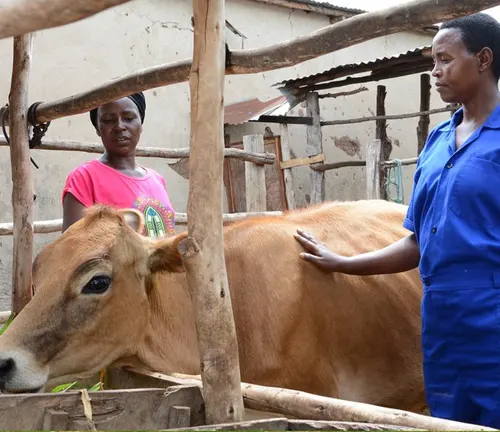
Milk Production and Quality
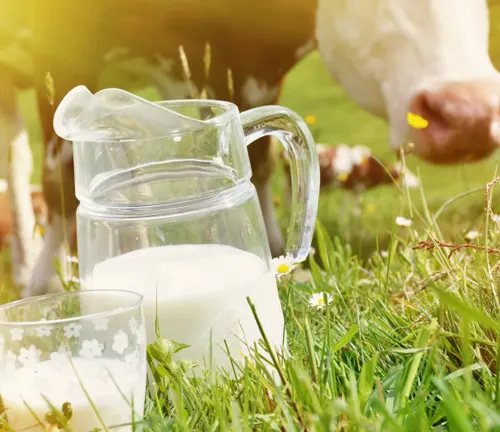
Rich and Creamy Milk
Jersey cattle are famous for the exceptional quality of the milk they produce. It is renowned for its rich, creamy texture and excellent taste. Jersey milk boasts a higher butterfat content, typically ranging from 4.5% to 5.5%, making it ideal for producing premium dairy products such as butter, cheese, and ice cream.
Efficiency in Milk Production
Despite their smaller size, Jersey cows are highly efficient milk producers. They have a remarkable ability to convert their feed into milk, resulting in cost-effective dairy farming.
Benefits to Farmers
Lower Maintenance Costs
Due to their smaller size and efficient milk production, Jersey cattle are easier and more economical to maintain compared to larger dairy breeds. Their adaptability also contributes to lower maintenance costs.
High-Quality Dairy Products
The high butterfat content in Jersey milk translates to premium prices for dairy farmers. This means that farmers who choose Jersey cattle can enjoy a higher return on investment due to the superior quality of their dairy products.

Modern Role of Jersey Cattle
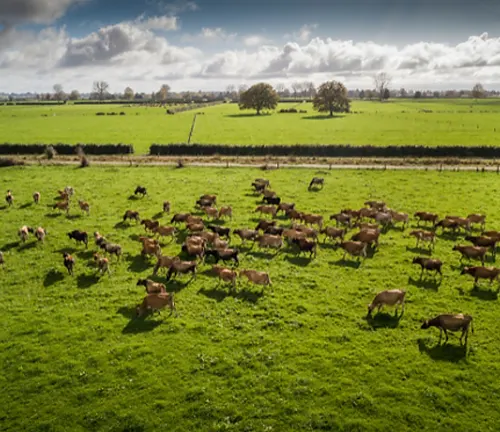
Sustainable Farming Practices
Jersey cattle are well-suited for sustainable and organic farming practices. They thrive on pasture-based diets and have gained popularity in eco-friendly agricultural methods.
Popularity Among Dairy Enthusiasts
Beyond their contributions to the industry, Jersey cattle have garnered a dedicated following among dairy enthusiasts, hobby farmers, and small-scale dairy operations. Their unique qualities and charming disposition make them a favorite choice.
Different Species
Jersey Cattle
belong to a single breed, known as the Jersey breed. There are no distinct species of Jersey Cattle. However, within the Jersey breed, there may be different individuals with variations in characteristics, such as coat color, markings, and milk production.
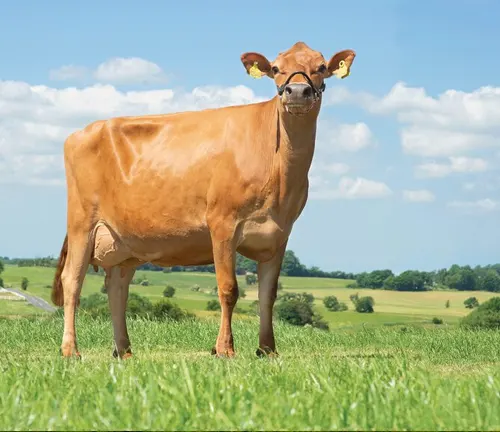
Frequently Asked Question (FAQs)
1. Are Jersey cattle suitable for small-scale dairy farming?
Yes, Jersey cattle are an excellent choice for small-scale dairy farming due to their manageable size and efficient milk production.
2. Can Jersey cows adapt to different climates?
Absolutely, Jersey cattle are known for their adaptability and can thrive in a variety of climates, including both hot and cold regions.
3. What is the typical lifespan of a Jersey cow?
Jersey cows can live for 12 to 15 years when provided with proper care and nutrition.
4. Are Jersey cattle easy to handle?
Yes, Jersey cattle are renowned for their gentle disposition, making them relatively easy to handle, even for novice farmers.
5. What is the butterfat content in Jersey cow milk?
Jersey milk typically has a butterfat content ranging from 4.5% to 5.5%, making it ideal for high-quality dairy products.
6. Are Jersey cows suitable for organic farming practices?
Yes, Jersey cattle are well-suited for organic farming due to their ability to thrive on pasture-based diets and adapt to sustainable agricultural methods.
7. Can Jersey cattle be used for beef production?
While Jersey cattle are primarily dairy cows, their male calves are often raised for beef production, although they may yield smaller cuts compared to dedicated beef breeds.
8. Do Jersey cows require special care in terms of nutrition?
Jersey cows have specific dietary needs, and it’s essential to provide them with a balanced diet to support their milk production. Consultation with a veterinarian or nutritionist is advisable.
9. What are some common health issues in Jersey cattle?
Jersey cattle may be prone to certain health issues, including mastitis and metabolic disorders. Regular veterinary care and proper management can help prevent and address these concerns.
10. Can Jersey cows produce milk year-round?
Jersey cows can produce milk year-round, but their milk production may vary depending on factors like lactation cycles and management practices.
11. Are Jersey cattle good for grazing on pasture?
Yes, Jersey cattle excel at grazing on pasture, and they can efficiently convert pasture grass into high-quality milk.
12. How do Jersey cows compare to other dairy breeds in terms of milk production?
While they may produce less milk than some larger dairy breeds, Jersey cows are known for the superior quality of their milk, particularly its high butterfat content.
13. Are Jersey cows known for their friendly disposition?
Yes, Jersey cattle are typically friendly and docile, making them a pleasant choice for farmers to work with.
14. Are there specific breeding considerations for Jersey cattle?
Breeding Jersey cattle involves selecting sires that complement the desired traits in the breed, such as milk production and conformation.
15. Where can I find Jersey cattle for purchase?
You can find Jersey cattle for purchase through reputable breeders, dairy farms, or agricultural auctions. It’s essential to research and choose a reliable source.


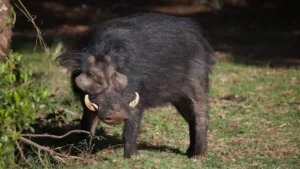


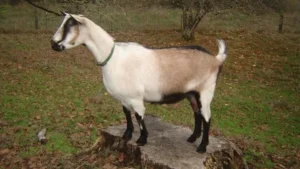
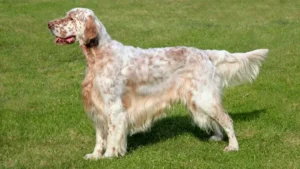


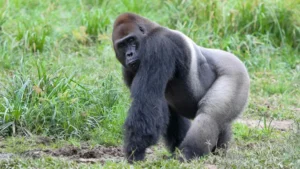

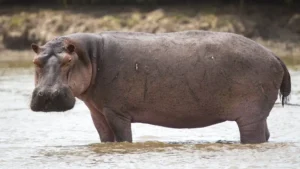

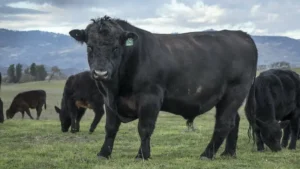
Leave your comment